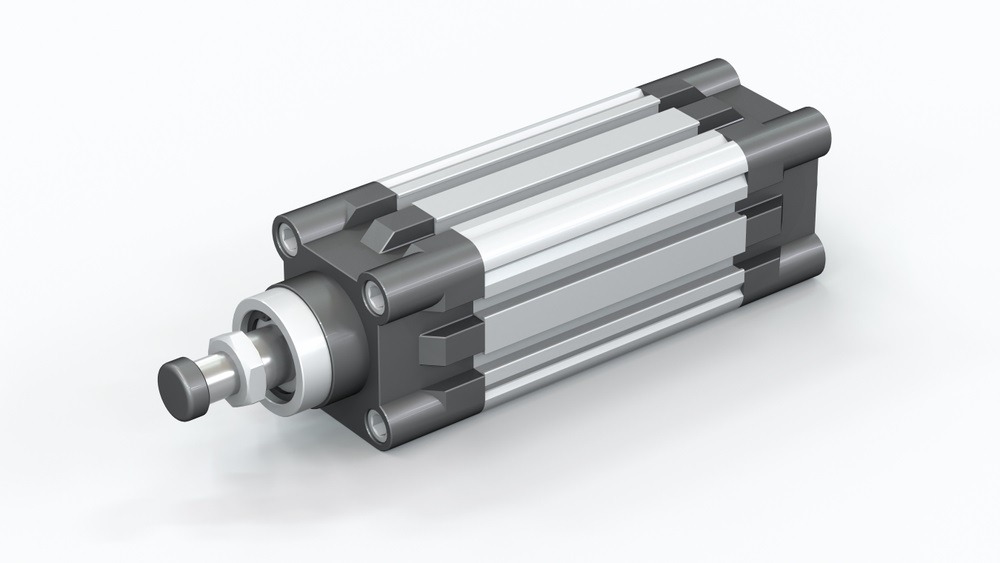Introduction
In the fast-paced world of manufacturing, efficiency and precision are paramount. Actuators play a pivotal role in ensuring these qualities in heavy industrial applications. From powering machinery to automating processes, these devices convert energy into motion, making them indispensable in the manufacturing landscape.
As a business owner or an employee in the manufacturing sector, understanding the different actuator designs available and their unique functionalities can significantly influence operational success. This post will delve into a comparative analysis of various actuator designs, exploring their advantages, disadvantages, and ideal applications. By the end, you’ll be equipped to make informed decisions tailored to your specific needs.
Understanding Actuators
What Are Actuators?
Actuators are mechanical devices responsible for controlling a system or mechanism by converting energy into controlled motion. They can be classified into several types based on their energy source, primarily including:
- Hydraulic Actuators: Utilize fluid pressure to create motion.
- Pneumatic Actuators: Rely on compressed air or gas for operation.
- Electric Actuators: Employ electric motors to generate motion.
- Hybrid Actuators: Combine features from multiple actuator types for enhanced performance.
Working Principles
Each actuator type functions based on its unique mechanism, responding to various operational requirements:
- Hydraulic Actuators: Use hydraulic fluid pressure, creating powerful motion suitable for heavy lifting.
- Pneumatic Actuators: Utilize airflow to enable rapid movements, ideal for applications needing quick cycles.
- Electric Actuators: Convert electrical energy to mechanical motion, known for their precision and control.
- Hybrid Actuators: Integrate hydraulic or pneumatic systems with electric components for improved versatility.
Key Design Factors in Actuators
When selecting an actuator, several critical design factors must be considered:
Force and Torque Output
- Importance: Essential for heavy lifting and operational efficiency.
- Consideration: Determine the maximum load the actuator needs to handle to ensure optimal performance.
Speed and Response Time
- Relevance: Applications that require quick actions benefit from faster actuators.
- Consideration: Identify whether responsiveness is crucial for your machinery or process.
Durability and Maintenance Needs
- Considerations:
- Environment: Assess if the actuator will operate in harsh conditions.
- Maintenance: Some actuators may require frequent upkeep, impacting overall productivity.
Control Features and Integration
- Functionality: Connection with control systems and sensors is vital for automation.
- Consideration: Evaluate the compatibility of actuators with existing systems to facilitate seamless integration.
Size and Weight Constraints
- Implications: Space limitations can influence actuator choice.
- Consideration: Choose actuators that fit operational environments without compromising functionality.
Comparative Analysis of Actuator Designs
- Hydraulic Actuators
-
- Pros:
- High force output, making them ideal for heavy lifting.
- Excellent for applications requiring constant force under varying loads.
- Cons:
- Can be expensive due to fluid systems and potential leakage issues.
- Requires regular maintenance to avoid fluid contamination.
- Ideal Applications:
- Heavy machinery, construction equipment, and metal forming processes.
- Example: Hydraulic cylinders used in construction cranes demonstrate their ability to lift and lower heavy loads effectively.
- Pros:
- Pneumatic Actuators
-
- Pros:
- Fast operation and movement, minimizing cycle times.
- Clean and environmentally friendly, as they mainly use compressed air.
- Cons:
- Typically limited force output compared to hydraulic actuators.
- Can suffer from energy losses due to air leakage.
- Ideal Applications:
- Assembly lines, packaging machines, and material handling.
- Example: Pneumatic grippers used in automation systems allow for rapid material handling with minimal downtime.
- Pros:
- Electric Actuators
-
- Pros:
- Excellent precision and control make them ideal for applications requiring accurate positioning.
- Energy-efficient since they only use power when moving.
- Cons:
- Limited force output compared to hydraulic options; may require gear reduction for heavy loads.
- More susceptible to environmental factors like moisture and temperature.
- Ideal Applications:
- Robotics, CNC machinery, and automated assembly processes.
- Example: Electric linear actuators used in CNC equipment provide the precision needed for intricate parts manufacturing.
- Pros:
- Hybrid Actuators
-
- Pros:
- Combines the strengths of hydraulic and electric systems, providing versatility and efficiency.
- Capable of high-speed and high-force applications.
- Cons:
- More complex designs can increase initial costs and maintenance needs.
- Integration may require specialized knowledge.
- Ideal Applications:
- Hybrid assembly systems and applications with diverse operating requirements.
- Example: A hybrid actuator utilized in industrial robots could smoothly transition between high-speed tasks and heavy lifting.
- Pros:
Comparison Table: Key Features and Metrics
| Actuator Type | Force Output | Speed | Maintenance Needs | Ideal Use |
| Hydraulic | High | Moderate | Regular | Heavy lifting machinery |
| Pneumatic | Moderate | High | Low | Quick motion applications |
| Electric | Moderate | Moderate | Variable | Precision tasks |
| Hybrid | High | High | Moderate | Versatile applications |
Selecting the Right Actuator for Your Application
Choosing the appropriate actuator relies on a variety of considerations:
- Load Requirements: Assess the amount of force needed and any specific operational demands.
- Environmental Factors: Consider temperature, humidity, and potential exposure to contaminants.
- Integration Needs: Verify compatibility with existing machinery and control systems.
- Budget: Balance upfront costs with long-term operational expenses and maintenance needs.
Consulting with an engineer or industry expert can provide insights tailored to your operation, ensuring you select the right actuator solution.
Conclusion
In conclusion, the choice of actuator design significantly impacts operational efficiency and reliability across manufacturing applications. By understanding the various options available—hydraulic, pneumatic, electric, and hybrid—business owners and employees can make informed decisions that enhance productivity.
As industry demands continue evolving, staying abreast of advancements in actuator technology will provide a competitive edge. Whether you’re looking to upgrade existing machinery or implement cutting-edge systems, a thorough understanding of actuator designs will serve as a critical resource in navigating the complexities of modern manufacturing.


